JAAS—25 years of success!
Dear colleagues and friends,We wish you all a happy, healthy and successful 2010, which will be a special year for all of us. The Journal of Analytical Atomic Spectrometry celebrates its 25th anniversary this year and we are delighted to be able say that JAAS is one of the leading journals in its field. The manuscripts published in JAAS over the last 25 years cover the entire spectrum of analytical methods and techniques important for element and trace element analysis, isotope ratio determinations and of course speciation techniques, data processing, and statistics. A variety of new strategies, methods, instrumentation and sample introduction systems have been described in an impressive number of articles and many of these strategies are now applied in various research laboratories and in industry. That we are able to celebrate this 25th anniversary means that you have continually contributed to this journal with excellent science and new ideas. We take great pleasure in thanking you our authors, reviewers, supporters and readers for making JAAS such a successful journal.
Searching the articles it becomes visible that from the beginning in 1986 until today a shift towards inductively coupled plasma-related research has taken place. ICP has become one of the central techniques studied and applied for trace elements and isotope ratio determinations. Therefore, for the next generation of authors it is a must to remember that the development of the ICP-MS by R. S. Houk and co-workers published in 1980 (R. S. Houk, V. A. Fassel, G. D. Flesch, H. J. Svec, A. L. Gray and C. E. Taylor, Anal. Chem., 1980, 52 (14), pp 2283–2289, DOI: 10.1021/ac50064a012) is celebrating its 30th birthday also this year. Back in 1980 it may not have been predicted that this work would have such a tremendous impact and influence on elemental analysis and isotope ratio determinations. However, I can only speculate about this because in 1980 I was still in school and did not even know what an ICP was. Watch out for an article from Professor Houk later this year celebrating this seminal discovery.
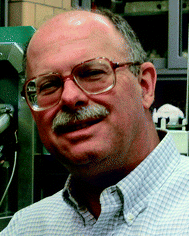 | ||
| Plate1 R. S. Houk | ||
Remember too that laser ablation inductively coupled plasma mass spectrometry is 25 years old this year (A. L. Gray, Analyst, 1985, 110, 551–556, DOI: 10.1039/AN9851000551) and searching JAAS you can find a lot of contributions leading to the tremendous improvement in the understanding of this technique. A good portion of “open questions for further research” raised by Alan Gray in this paper have been successfully tackled, studied and published in our journal.
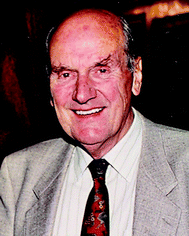 | ||
| Plate2 Alan Gray | ||
There are many interesting questions related to 25! What's the opinion of a 25 year old researcher about the future of atomic spectroscopy? Are you interested in what a well-known scientist in our field of research did 25 years ago? Or what Gary Hieftje predicts for atomic spectroscopy in the next 25 years? Well, most of you remember his most famous prediction about the future of AAS. We all know the math was correct. I can assure you that you will get a number of surprises during this 25th anniversary and I hope that these contributions will be stimulation for further submissions of high quality research to JAAS.
Last year we indicated that we will work harder on involving geologists, biologists and other interdisciplinary research areas into our journal, since we are working with similar methods, techniques and equipment, and on similar fundamental questions. As a positive result of our activities in 2009 we received more manuscripts from these fields than the years before and we certainly hope that this positive trend will continue. Some of you might have noticed that reviewer comments on some JAAS manuscripts have been longer than the average 1.5 pages. Well, there are different traditions and differences between the communities and we should see this as a very positive chance to learn from each other.
JAAS community news
With the fact that the key feature of JAAS' success is the strength of the journal's community in mind, we are delighted to announce the launch of our blog coordinated by our News Editor, Steven Ray. Read Steve's introduction to JAASNews at the end of this Editorial.Editorial and Advisory Boards
We welcomed two new members to our Editorial Board during 2009, Barry Sharp, Loughborough University and Gunda Köllensperger, BOKU, Vienna.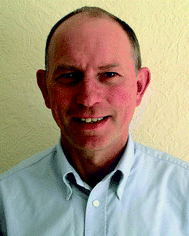 | ||
| Plate3 Barry Sharp | ||
 | ||
| Plate4 Gunda Köllensperger | ||
We thank our Advisory Board members who retired in 2009, Jose Luis Burguera, Olivier Donard, Erik Larsen, Jim Harnly and Chang Park and welcome our new members Takafumi Hirata, Jan Kosler, Heung-Bin Lim, Christophe Pécheyran, Martín Resano and Ashley Townsend who have joined the Advisory Board for the first time.
We also take this opportunity to thank all of our Editorial and Advisory Board members for your invaluable input and contributions to JAAS over the past years, it has been a pleasure working with all of you.
High impact publishing
JAAS saw its impact factor rise over 20% to 4.03 with the publication of the 2008 impact factors, calculated by ISI. This impressive figure, together with an Immediacy Index of 0.677, makes it clear that JAAS is the journal of choice for leading edge research focused on fundamentals in elemental analysis and isotope ratio determinations within all fields of application. We are sure that with the continued contribution of your best research we can look forward to even higher impact in the future.Nearly all the RSC journals increased in impact factor, immediacy index and article influence, with an impressive average impact factor increase of 8.2%. Overall, the average impact factor for the RSC portfolio now stands at 4.7, equal to that of the ACS collection (Fig. 1).
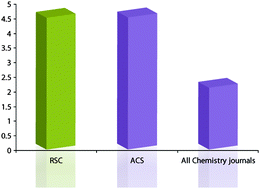 | ||
| Fig. 1 Average impact factors | ||
RSC journals feature in the top 10 rankings (by impact factor and immediacy index) in 6 of the 7 core chemistry categories as listed on ISI, and of the top 100 chemistry journals, ranked by impact factor, 15 are from RSC Publishing.
New integrated content delivery platform
RSC Publishing is proud to announce the launch of our powerful new content delivery platform that supports multiple content types. Powered by the industry's leading MarkLogic Server, and benefiting from the interactive browsing functionality offered by RSC's enhanced html mark-up technology, the platform delivers exceptionally fast and precise results. Users can now search 165 years of world-class RSC-hosted content including 20![[thin space (1/6-em)]](https://www.rsc.org/images/entities/char_2009.gif) 000 book chapters, 300
000 book chapters, 300![[thin space (1/6-em)]](https://www.rsc.org/images/entities/char_2009.gif) 000 journal articles and 450
000 journal articles and 450![[thin space (1/6-em)]](https://www.rsc.org/images/entities/char_2009.gif) 000 database records from a single, simple search. Designed around readers' preferences (identified from a detailed and ongoing user-interview process), our user-friendly platform offers faster browsing, intelligent searching, consistent user experience irrespective of content type sought, and simpler more intuitive navigation. We'll be releasing even more exciting functionality later in the year. Please tell us what you think at mailto:rscpublishing@rsc.org.
000 database records from a single, simple search. Designed around readers' preferences (identified from a detailed and ongoing user-interview process), our user-friendly platform offers faster browsing, intelligent searching, consistent user experience irrespective of content type sought, and simpler more intuitive navigation. We'll be releasing even more exciting functionality later in the year. Please tell us what you think at mailto:rscpublishing@rsc.org.
ChemSpider
Last year RSC acquired ChemSpider, the richest single source of structure based chemistry information freely available online, with fast searching of over 21.5 million chemical structures. Alongside the powerful database, the ChemSpider development team brings well over 40 years of additional cheminformatics experience to the RSC, including a chemistry centric document mark-up system capable of finding chemical names and converting to chemical structures and linking to online resources. Integration of this technology with RSC's existing award winning enhanced html mark-up technology, RSC Prospect, will lead to substantial enhancements in semantic enrichment for the chemical sciences. Find out more at www.chemspider.com.Continued e-alert success in 2010
2009 saw the launch of the new RSC journal e-alerts; in 2010 we are hoping to see a continued rise in their popularity. The e-alerts are packed with information and links enabling readers to easily view content as soon as it's published, helping you to stay abreast of journal content. The new e-alert registration system has been designed so you can manage your own e-alert subscriptions, tailoring the information you receive and giving you the freedom to unsubscribe at any point. You can find out more information online: www.rsc.org/alerts.New for 2010: The RSC eBook subject collections
In response to readers' needs and testament to the innovation of RSC Publishing, we are pleased to announce the launch of new RSC eBook Subject Collections.The 9 new RSC eBook Subject Collections, including a Tutorial Chemistry Texts and Paperbacks package, deliver the high quality content contained in our books into subject specialist packages. With new content being uploaded throughout the year, the new RSC eBook Subject Collections are set to become another key, premier resource. To find out more, please visit www.rsc.org/ebooks.
Chemical Science
This new flagship journal will launch in mid-2010 and will publish findings of exceptional significance from across all the chemical sciences. Editor-in-Chief Professor David MacMillan of Princeton leads a dynamic international team of Associate Editors responsible for the scientific development of the journal. Free institutional online access to the entire 2010 and 2011 content of Chemical Science will be automatically provided to all existing customers.Keep in touch with the latest news at www.rsc.org/chemicalscience.
…on a related note
RSC is pleased to announce a significant new global symposia series supporting the launch of Chemical Science. The International Symposia on Advancing the Chemical Sciences (ISACS) meetings will be held on three continents, over three sequential weeks, focusing on distinct subject areas. More information can be found at: www.rsc.org/isacs.New journal enhances RSC Publishing's analytical publication portfolio
September 2009 saw the publication of the first Analytical Methods issue—the new journal highlighting the development of innovative techniques and applications of analytical science addressing key issues of societal concern. The journal appeals to readers across academia and industry with an interest in the advancement of measurement science and those interested in the breadth of application of analytical methodologies. For more information visit: www.rsc.org/methods.Free access available for all new RSC journals
Free institutional online access is available for all our newest journals. Access, which is managed by institution and IP address, is provided following a simple registration process. Make sure you and your colleagues don't miss out on the free access by filling in the registration form:www.rsc.org/free_access_registration.
And finally…
We look forward to celebrating JAAS’ 25th birthday with you, reflecting on achievements in atomic spectrometry over 25 years and anticipating future successes. Thank you for your support, your comments and suggestions are always welcome, please contact us at mailto:JAAS-RSC@rsc.org..Detlef Günther, Chair, Editorial Board
Niamh O'Connor, Editor
May Copsey, Deputy Editor
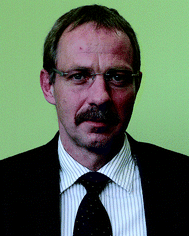 | ||
| Plate5 Detlef Günther | ||
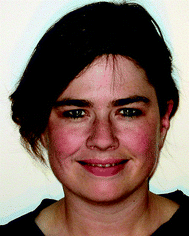 | ||
| Plate6 Niamh O'Connor | ||
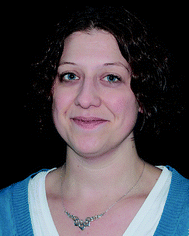 | ||
| Plate7 May Copsey | ||
Dear Colleagues,
On behalf of the Editorial Board it is my pleasure to introduce a new feature of JAAS: the JAASNews webpage. This new online resource represents something of a cross between a newsletter and a blog, and we have designed it to fulfil a specific need within the atomic spectroscopy community. In part, the concept of JAASNews echoes back to a time when the back pages of scientific journals were filled with news from a scientific society: recent happenings of note, recognition of recent awards, humorous anecdotes, words of appreciation, and, too often, the news of a member's passing. Nowadays, this type of information is not included in the pages of scientific journals and we have, therefore, fashioned the JAASNews webpage to fulfil this role for the JAAS readership. Because JAASNews is an online publication, however, the newsletter concept can be extended and reinterpreted in creative ways. Webpage content can be changed rapidly and often, and we anticipate that the components of the JAASNews site will transform significantly based upon the response from the readership. Most importantly, this web form permits you, the community, to participate and contribute directly. All content will be moderated by an editor, however, the completion of a simple registration process will then allow you to comment on any of the stories featured in JAASNews. Thus, we envision a JAASNews page that is an ever-evolving newsletter that supports a significant amount of user content and solicits input from a very wide authorship.
I have agreed to serve as the first in what we hope will be a long line of JAASNews Editors, and I invite you to check out the first issue launch of the JAASNews page in January 2010 marking the 25th anniversary of the journal.
I look forward to your contribution.
Steven J. Ray
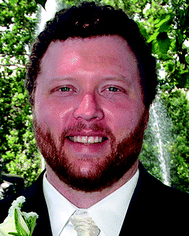 | ||
| Plate8 Steven J. Ray | ||
| This journal is © The Royal Society of Chemistry 2010 |
